We find ourselves back in PA before heading to our next new state. In fact, we finally got our state map added to the new rig. Look at us go!

Lancaster
We were excited to visit Lancaster, PA expecting quaint Amish streets and another Farmer’s Market. While the city turned out to be much larger than any of us expected, the market did not disappoint! Carrying on with our longest, oldest, most continuouses from the last stop… City Market is America’s oldest continuously run farmer’s market in the nation.
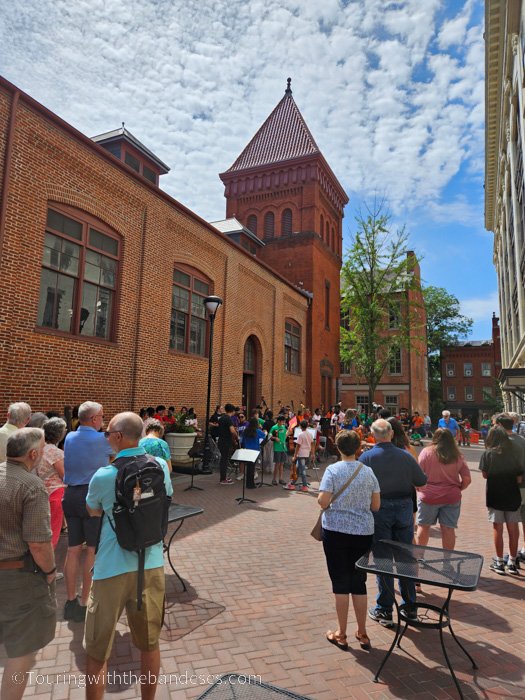

And there were authentic Amish sightings.
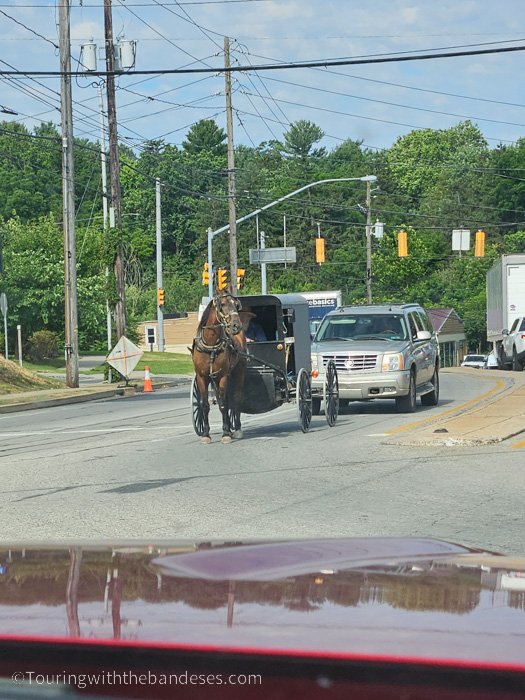
The best one being spotted by our travel besties when we were out of the park. This is the Amish version of Uber Eats. They were selling bread from their cart in the RV campground.

Philadelphia Phillies
Baseball stadium numbers 15 (for me) and 17 (for Jeff).

Citizens Bank Park, where the Philadelphia Phillies play, is just your average ballpark with below average food.

The fans made the experience FANtastic! We’ve never visited a ballpark where at least 98% of the fans were rooting for the home team. It was incredibly exciting.
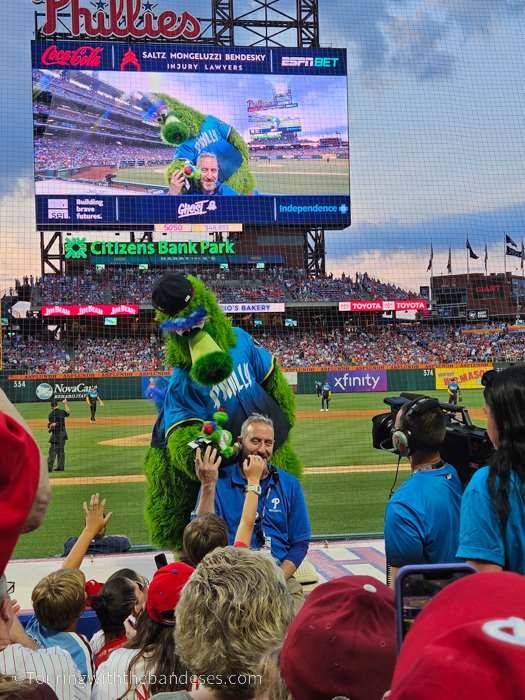
The Phillies are the oldest one city, one name professional sports team in America. And their fan base shows. So much so that they named their Jim Henson’s inspired mascot the fanatic, only spelled with a PH to go along with Philadelphia.
Gettysburg

Our Gettysburg Address for the next 5 days is Gettysburg Campground for the 161st anniversary of the Battle of Gettysburg.
If you are into military strategy or a total civil war nerd, this place has an incredible amount to offer. And even if you just want to learn a little more about our country’s angst-ridden teen years, a visit here is well worth the time.

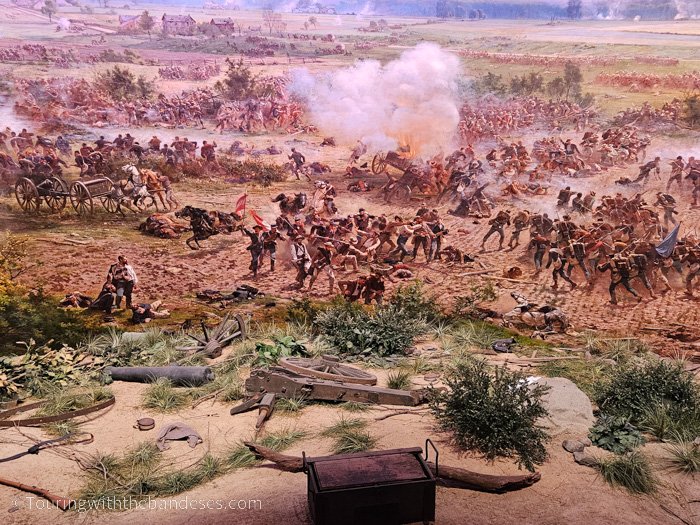
We started our stay with the museum and movies including the cyclorama (a panoramic image in cylindrical form) that was painted just 20 years after the battle in 1883. The cyclorama depicts Pickett’s Charge, one of the most famous assaults during the battle. The Cyclorama stands an incredible 42’ high and 377’ around. It can be hard to distinguish where set ends and painting begins.
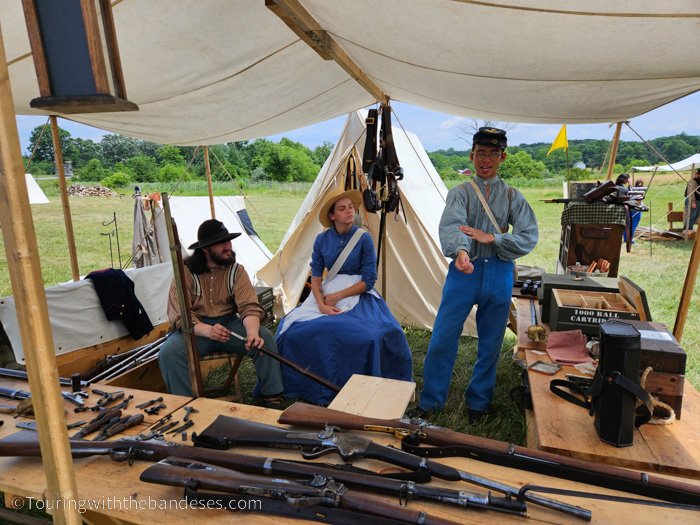
The museum provides a wealth of information from the events leading up to the battle, battle strategy, the lives of the people in Gettysburg, and what the soldiers had to endure. Some of the men marched for 20+ miles overnight with little to no food and minimal water only to be sent into battle with no rest. And we complain about driving more than 5 hours on crappy roads and still having to set up the rig when we get to the next campground…

Just a very short 4 months after the Union victory and 50 thousand casualties from the battle, Abraham Lincoln delivered one of the most famous speeches in history, the Gettysburg Address.
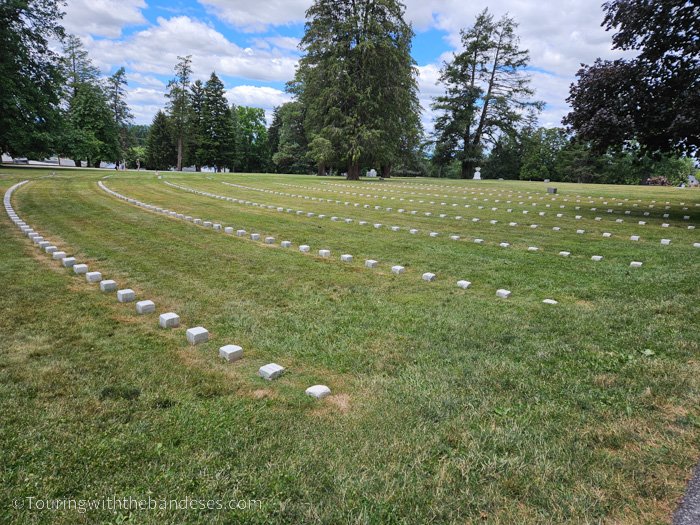
The battle was so bloody that it resulted in the largest number of casualties in any battle during the Civil War. Due to the large number of deaths that occurred and the extreme July heat, there was a need to quickly get the remains buried.

Originally, bodies were essentially buried where they lay but shallow graves quickly became troublesome and a formal cemetery was created.

The Battle of Gettysburg covered roughly 11,000 acres. That’s about the size of 8591 football fields. The National Park currently covers just over 6000 acres so this isn’t one you can walk!
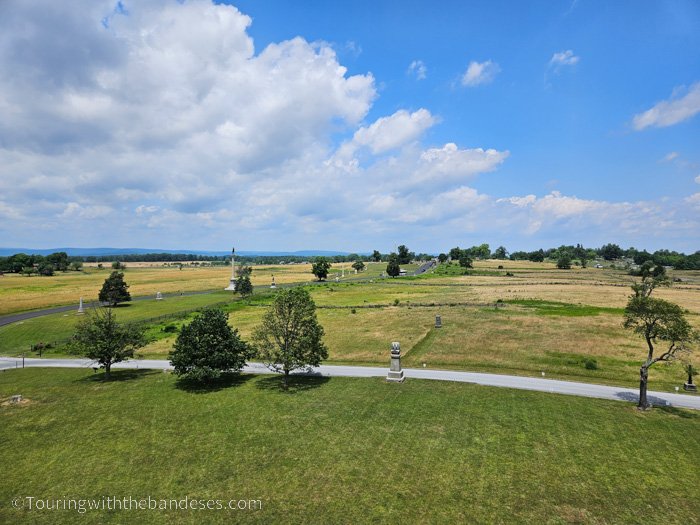
Fortunately, there are lots of options. We started out with the very popular Auto Audio tour. You can listen to different park rangers talk about the various skirmishes throughout the park.

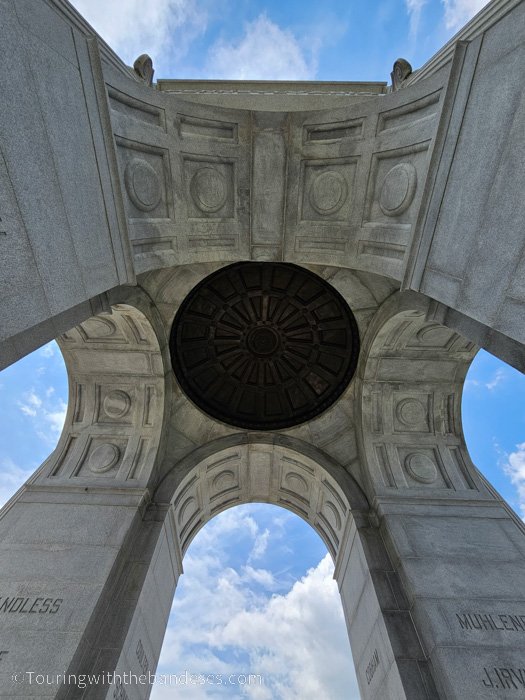
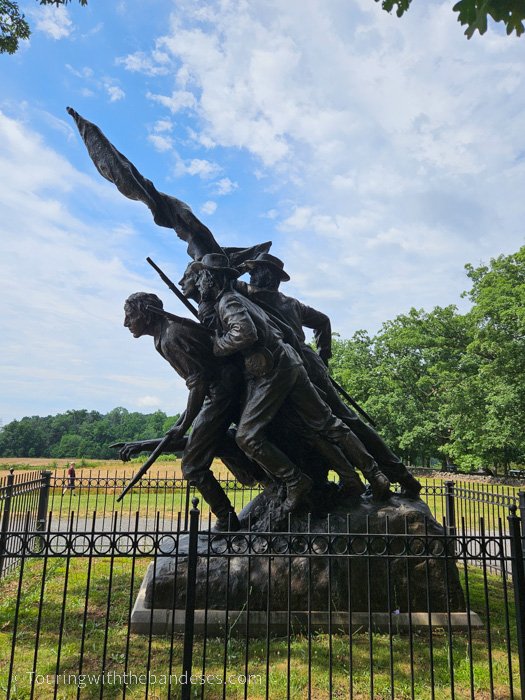
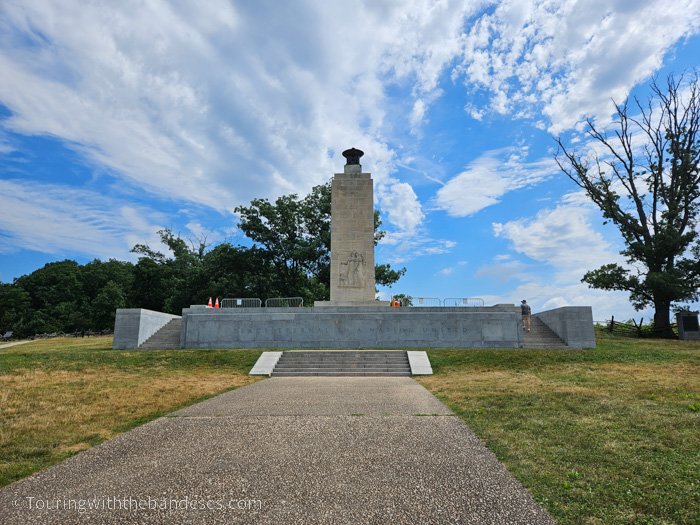

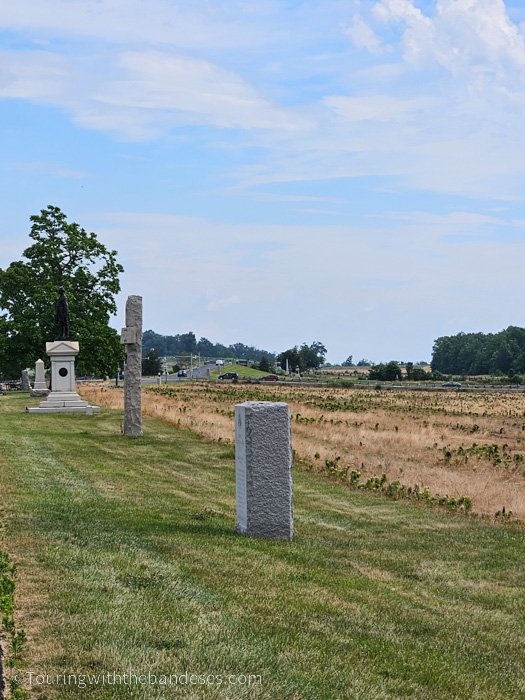
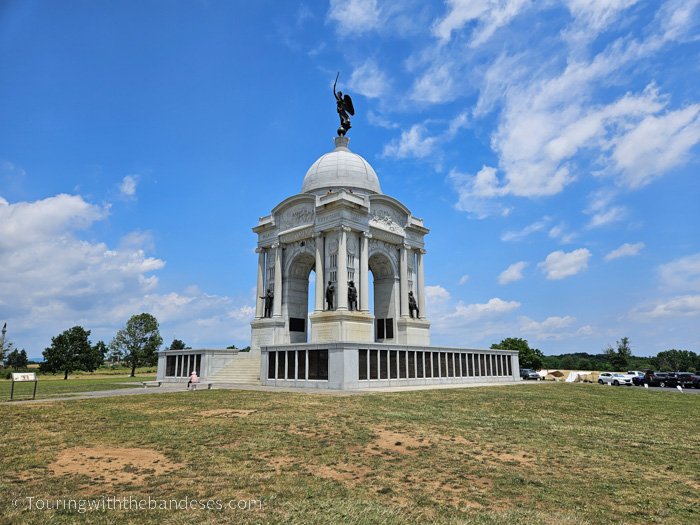
Stop as often as you like to get out and take photos of just a few of the 1328 monuments dedicated to generals, brigades, troops, moments and more. There are so many monuments here it is considered one of the largest collections in the world.
Or check out some of the reenactments like this demonstration of a canon being fired.

Which can startle the sunglasses right off your face!

And while you can’t miss the stories of soldiers and the many locations where fighting occurred, what could be easily missed are the stories of the townspeople and what they endured.

We were escorted around downtown Gettysburg by Miss Patty who shared stories of these resilient people.

Jennie Wade is the only civilian woman to have died at the Battle of Gettysburg. She was at the home of her sister helping to care for her and her newborn infant. She was kneading dough to make bread for the union troops when a random stray bullet struck and killed her instantly.

Today Jennie’s grave is the only other grave of a female where the American flag flies 24 hours a day. The other grave is that of Betsy Ross, the designer of the original American flag.
Gettysburg was a town of 400 buildings (250 still remain today) with around 2700 residents. Once the merchants and key political men of Gettysburg learned of the approaching Confederate army, they loaded up their most valuable possessions excluding their wives and families, and left for Philadelphia. I could insert a snide comment or two here but I’ll leave that one to your imagination.
Then there was Lydia Leister, a widow who’s farm had been used as the headquarters of General Meade, the commander of the Union troops. All her food supplies, animals, and even the wood from her fences had been used by the troops.
Once Lydia was able to return to her farm, there was little left but the main buildings and 17 dead horses. What does a widow in the 1800’s do to provide for her and her children after such devastation? You come up with innovative solutions that are a win win. Faced with no help and needing a way to dispose of all the dead horses and livestock, Lydia burned the horses and sold the ash/bone mix as fertilizer, profiting enough to buy 7 more acres of land!

And if the Civil War isn’t your cup of tea, maybe a visit to Dwight Eisenhower’s home. Eisenhower spent a lot of time in Gettysburg throughout his early military career. He had fallen in love with the area and chose to buy the one and only home he and his wife, Mamie, ever owned.
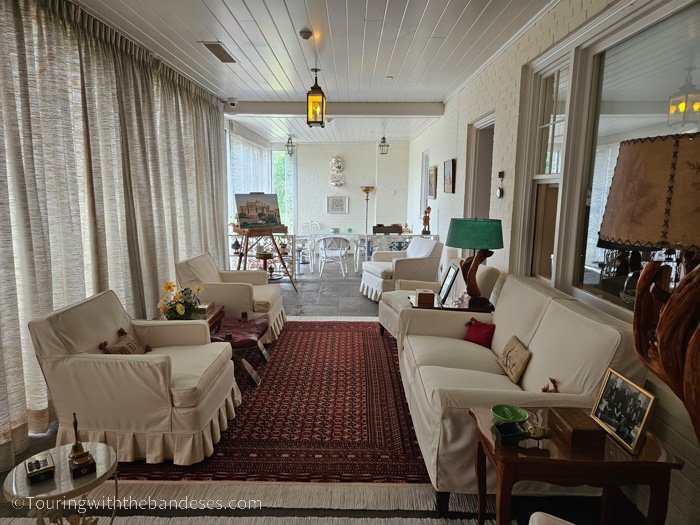
During his presidency, he used the home as a respite but also to meet with world leaders including Winston Churchill, French President Charles de Gaulle, and Soviet Premier Nikita Khruschev.
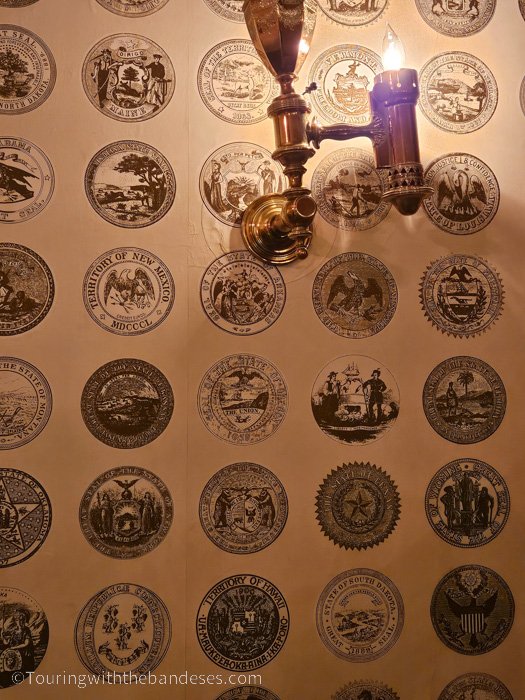
Mamie had two rules for anyone who entered her home. Don’t touch the wallpaper and don’t slide down the banister. The wallpaper has emblems for 49 of 50 states, Hawaii had not yet been admitted to the union.
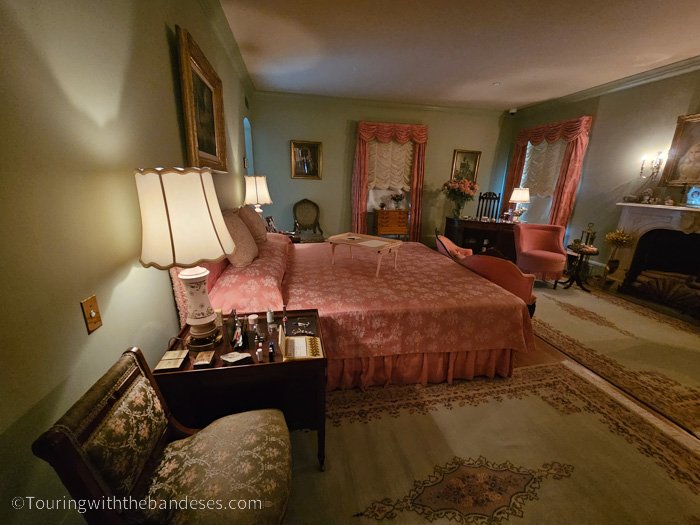
Mamie was someone I could idolize. She believed that once a woman reached the age of 50, she was entitled to stay in bed until noon. A nice idea if you can pull it off!
Next up we visit our 28th state in the RV. Any guesses where it will be?
